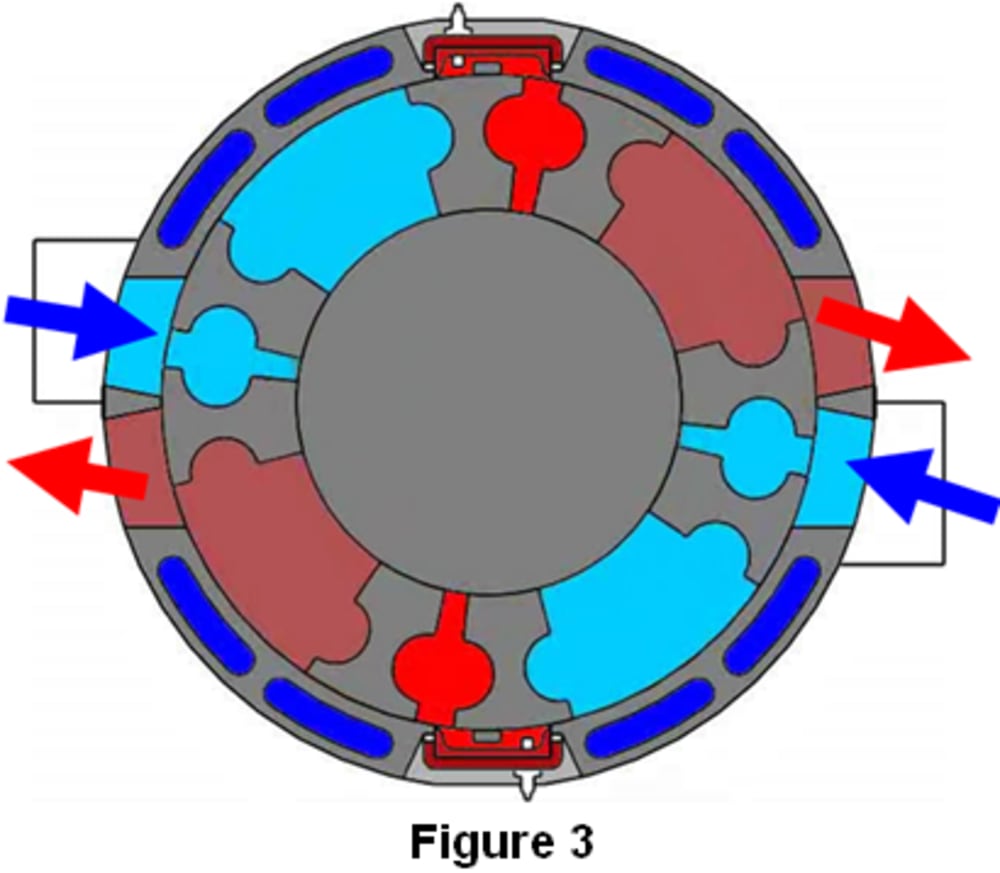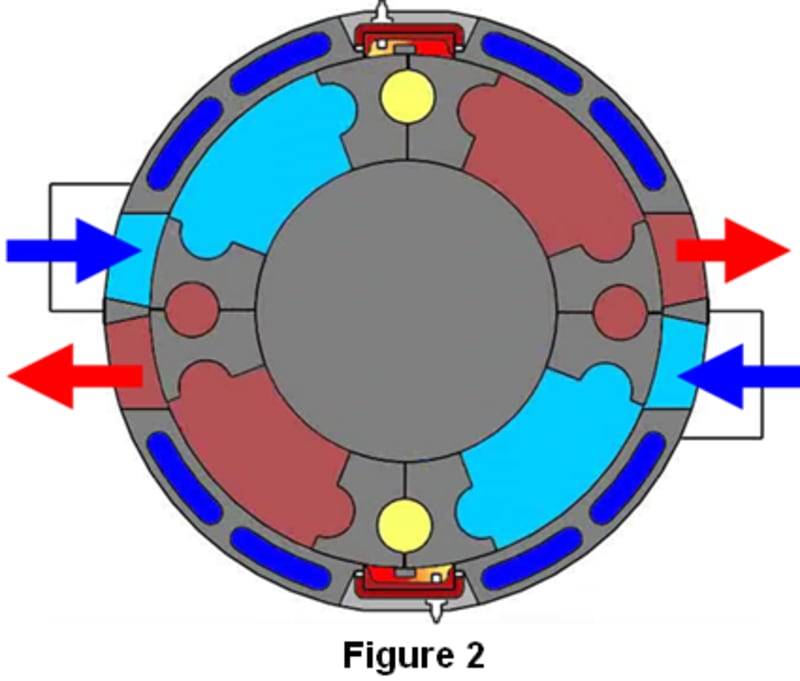Rotary-Hybrid Engine
FACT:
The monopoly of using all known internal combustion engines (ICE) has only reciprocators on the ground and gas-turbines (GTE) in the air.
PROBLEM:
Reciprocator’s drawback is high demand on properties and quality of fuel.
Drawback of low power GTE is huge fuel consumption vs. reciprocators.
INNOVATION: "Rotary-Hybrid Engine - RHE" (see Fig.1,2,3) combines high peak pressure in working chamber and small fuel consumption with advantages of rotary kinematics - high power and low weight.
New quality of RHE is consumption of any fuel. It is provided by permanent fuel burning in always hot combustion chambers.
New quality of RHE is environmental safety. It is provided by flame's effective ignition from small combustion chambers even lean air-fuel mixture (AFM) with minimal formation of harmful oxides in hot gases.
New quality of RHE is small cost of production vs. GTE and reciprocators due to small number of precisely manufactured parts.
RHE has annular structure with inlet and outlet windows in which two rotors with blades make rotational-vibrational motion. The RHE kinematic mechanism provides such a movement: Hot combustion chambers are placed out of engine's cavity. Their volume is less than 20% of minimum volume between rotor blades.
RHE works as follows (Fig.1). AFM (sky blue) through inlet window enters working chamber and compressed there (yellow) between rotor blades. Part of compressed AFM injected into hot combustion chambers. Where it ignites and burns. Primary, ignition of AFM performed by spark-plug or glow plug. Extrusion of exhaust gas (brown) realized between rotor blades in direction to exhaust windows.
Next movement of rotor blades provides minimum distance between them (Fig.2). In this case combustion chambers with burning AFM isolated from working cavity by blade's ends and combustion chamber bulkhead.
Next movement of rotor blades separates at certain distance (Fig.3). In this case combustion chambers with burning AFM are connected to the working cavity with compressed AFM. The torch does ignition and fuel combustion in closed volume with high pressure and high temperature (red). In this situation blades of rotors fulfill: AFM intakes from inlet ports; exhaust gases outputs from exhaust ports.
Thus in one working cavity simultaneously realized 8 of 4-stroke workflows.
Manufacturability. All parts of body and RHE kinematics can be fabricated by single modern manufacturing center.
Marketability. RHE has substantially of all technical/economic indicators vs. reciprocators and GTE in power range from 40 to 800 hp. This provides it monopoly position in engine’s market for general application.
Cost-effectiveness. RHE have no necessity of high pressure fuel equipment and synchronization of ignition. It has only one working cavity with two rotors instead multitude of pistons and cylinders with numerous parts of valve-distribution mechanism. RHE kinematic mechanism has only 7 parts. Therefore the cost of RHE manufacturing has become in 2 ÷ 2.5 times less than piston engines with the same power. Therefore, profits will be over 100% per one engine.
Video
Like this entry?
-
About the Entrant
- Name:Eugene Drachko
- Type of entry:individual
- Software used for this entry:SolidWorks
- Patent status:pending








